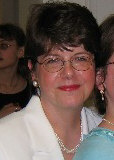http://www.korea.
Korea turning into a multiracial society
Date: October 25, 2007
Korea's growing foreign population, which topped the landmark 1
million mark in late August, is rapidly familiarizing Koreans with
the way of life in multiracial and multicultural societies.
Foreigners are increasingly ubiquitous in subways, restaurants,
neighborhood parks, streets and other areas nationwide. The 1 million
foreigners, including 720,000 residents, represent approximately 2
percent of the entire Korean population.
Reflecting the trend, foreign communities are springing up across
Korea, including a French community in Seoul's Bangbae-dong, "Little
Tokyo" in Seoul's Ichon-dong and the so-called Central Asian Village
in Seoul's Dongdaemun market area frequented by Korea's increasingly
large population of Central Asian and Russian immigrants.
In addition, a number of foreign districts have recently been
established in locations close to industrial complexes, such as Guro
in Seoul and Banwol in Ansan, Gyeonggi Province, as more and more
foreigners, mostly from China and Southeast Asian countries, come to
Korea in search of their "Korean dream." Korean-Chinese workers are
concentrated in Guro's "Yanbian Street" and Nigerians can be spotted
on Itaewon's "Nigerian Street."
A Nepalese street has emerged in Seoul's Changshin-dong, while
Filipino workers regularly flock around a cathedral in Hyehwa-dong in
downtown Seoul on Sundays.
In Seoul's Central Asian town, signboards of restaurants, fried
chicken houses, cafes and video shops are all written in Russian.
Every weekend, the area draws citizens of Mongolia, Uzbekistan,
Kazakhstan and Kyrgyzstan who come from their homes in Ansan, Guro,
Namyangju and other industrial suburbs to shop, eat, drink and catch
up on news from home. Mixed into the crowd are adventurous Koreans or
Western tourists looking to sample exotic Silk Road cuisines.
In the countryside, foreign brides, mostly from Vietnam, China and
the Philippines, have emerged as essential members of agricultural
households. According to government figures, one out of every four
men in rural areas is married to a foreign woman.
Reflecting the trend, an increasing number of provincial and county
governments are holding Korean language and cooking classes for
foreign wives.
The 1 million foreigners come from over 40 countries. Given Korea's
ethnically homogenous nature, such a multiracial society is a new and
enormous challenge to most Koreans.
According to data released by the Justice Ministry, the total number
of foreigners living in Korea, including illegal migrant workers,
reached 1,018,036 as of the end of September, with ethnic Chinese
accounting for 463,215, or 45.5 percent, followed by Americans
(115,204), Vietnamese (67,117), Filipinos (51,052), Thais (43,945),
Japanese (37,254), Mongolians (31,713) and Indonesians (25,969).
"The foreign population in Korea has grown by approximately 100,000
persons a year over the past decade. The expatriates here totaled
just 269,641 in 1995 and 491,324 in 2000," said a ministry official.
"Notably, about 65 percent of the foreigners live in the Seoul
metropolitan area. By 2010, the foreign community is expected to
swell to 1.4 million, accounting for 2.84 percent of the entire
Korean population," the official said.
The official also said the presidential office Cheong Wa Dae held the
second government meeting on Thursday (Oct. 25) to discuss new policy
measures to help remove inconveniences for foreigners in Korea and
improve the human rights and welfare of expatriate manual workers.

2 comments:
Hi, Roberta, good to see you back!
My Korean teacher was talking about this the other day. Thanks for posting!
Hope all is well with you and yours!
Hi Roberta,
I'm new to your blog and just wanted to say thank-you for both the blog and your adoptkorea website. I'm an adult Korean adoptee myself with 2 biological children of my own (wonderful boys). My husband and I want to adopt from Korea for our third child...and your website has provided a WEALTH of information! I appreciate the time you take out of your busy life with your family to give the rest of us this great resource...
thanks again!
KLR
Post a Comment